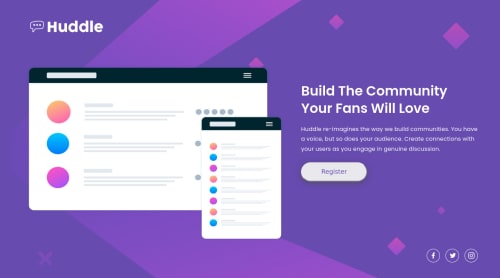Responsive Landing Page Using FlexBox and CSS Grid

Solution retrospective
It took me longer than expected to get the background and svg images params right.
I appreciate comments on better ways to code this task as my lines of code are many.
With thanks.
Please log in to post a comment
Log in with GitHubCommunity feedback
- @MacChristo
You sure have a lot of css and media queries there. But try to make all the content of your site show at different screen sizes. I still have quite a problem making mine show though, but what i do is give a lot of padding-bottom in vh to the last div or container on the site. By that at least, all my content shows. Your desktop button should have {border: none}
Marked as helpful
Join our Discord community
Join thousands of Frontend Mentor community members taking the challenges, sharing resources, helping each other, and chatting about all things front-end!
Join our Discord